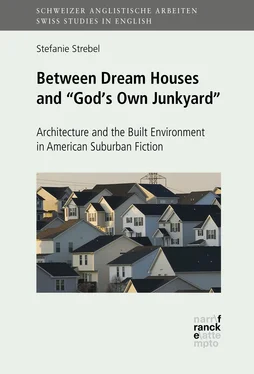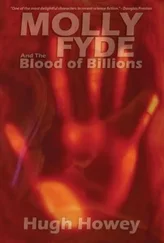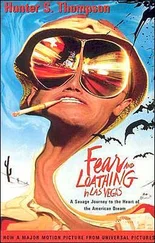Architectural representations in literature and material embodiments of literary constructions come into being not out of sheer necessity – most narratives include buildings, and every building invariably has a pre-text or can be read as a text –, but because the two arts overlap to an extent, which provides space for playfulness in their interactions with one another. What both literature and architecture have in common is an ability to speak, especially in terms of rhetoric. Wolin suggests as an example the analogy between figures of speech and figurative operations in buildings. The author describes how language transcends its literal meaning by means of verbal shapes that come into being through figurative speech. These figures are given names based on their formal characteristics, such as hyperbole, prolepsis or alliteration. Throughout the centuries, figures of speech have been listed to a point of great refinement. However, as Wolin points out, the proposition of architectural rhetoric and expression is far more recent. She transfers the five canonical figures of speech – figures of sound, figures of resemblance or relationship, figures of emphasis or understatement, verbal games and intentional errors – into the architectural rhetoric, for instance by replacing figures of sound with figures of repetition and regularity, and verbal games with figures of overlay, displacement or disruption. Wolin claims that similar to the generic tree in linguistics, in physical constructions, too, we must assume the existence of, for example, an imaginary generic window (Wolin 17). Hence, both language and architecture, it can be argued, share the same guiding principles. Due to the similarities between the figures of speech of the two arts, a relationship can be established despite the dichotomy between materiality and immateriality found in architecture and literature, respectively.
Regardless of these similarities, mimetically (re)creating a material three-dimensional space is among the hardest tasks of a writer, a fact which certainly adds to the neglect of architectural aspects in literary criticism. In film, which has the advantage of being a visual form of art, architecture is of far greater concern and is widely discussed in critical studies. It would be misleading to claim that literature lacks the visual aspect altogether, yet as the visual aspect is exclusively present in a mental form derived from words, it is necessarily more fragmentary and subjective than that of the physical edifice itself. As Wolin (17) points out, “[a]rchitecture defies verbal representation. Even Alain Robbe-Grillet, with his meticulous litanies of dimensions and details, cannot describe a building that can be drawn, nor can Umberto Eco tell us what the column itself can tell us, despite pages of labored analysis.” However, this does not mean that architecture should be excluded from literary discourse. Even though words can never authentically represent a building, an approximation is certainly possible. Wolin (17), too, insists that “the verbal battle against the recalcitrant architectural object must be waged, even if there can be no victory; words may never capture architecture, but they are mediators, interpreters, agents of reconciliation.”
The idea of words as mediators is also present in McClung, who points out the independence of material and immaterial values and demonstrates how literature can establish a link between the two. In the case of literary architecture, this linkage is facilitated by the fact that architectural referents in a text are part of the experience of the reader and thus constitute remembered elements:
Literary architecture mediates between the discursive, immaterial values of the text and the implicit, material ones of organised spaces and constructed phenomena. While typically expressing the central preoccupations of the work within which it is located, literary architecture at the same time expresses the nature and values of architectural forms independent of the text. It thereby associates two otherwise mutually exclusive modes of understanding and judging: that of language, acting discursively through the unfolding of events and commentary in time, and that of phenomena, acting memorially through the linkage of discrete visual and tactile perception in combinations of the mind. (“Architectonics” 33)
Due to these affinities between literature and architecture, the dichotomy between the two arts does not defy reconciliation, and assigning too little importance to the architectural aspect in suburban narratives would leave a gap in the study of both setting- and character-related concerns.
Even though the relationship between literature and architecture is not an easily accessible one, and even though the lack of research interest in this field is thus understandable to an extent, this lack is simultaneously astonishing when considering that architectural constructions are a crucial part of the setting of most narratives. It can also be argued that the relationship between literature and any material entity is similarly elusive – geographical landscapes, physical objects, human bodies –, but to many forms of literary representation of materiality, far more attention is paid. Furthermore, having said that the study of architecture in literature is far from a thriving field, this is even more the case for the study of architecture in suburban literature. The vast majority of publications in this context have been written by architectural rather than literary scholars, among which John Archer’s Architecture and Suburbia (2005), which is interspersed with literary and cinematic examples, is one of the most noteworthy. Another highly interesting publication is Archi.Pop (2014), a collection of essays dealing with the mediation of (suburban) architecture in popular culture. In literary circles, very little has been written on the topic, however. One example is Jo Gill’s The Poetics of the American Suburb (2013), which includes a discussion of constructional features such as the iconic picture window in one of its chapters. Having already established that the suburbs are considered a place of non-architecture from an artistic point of view, this lack of publications on the topic is unsurprising. Yet especially when widening the definition of architecture to include buildings of any type, also those of the vernacular tradition, and when expanding the horizon to include the entire built environment of American suburbia, this man-made, often inorganically developed landscape is a highly interesting field of study also in its fictional representations.
The Fictional Suburb Between Utopia, Atopia and Non-Place
When considering that the majority of the suburban development in the United States took place in the twentieth century, the literary and cinematic period from the 1920s until the present provides interesting insights into architectural choices and urban planning. It demonstrates on an architectural and social level how the suburbs rapidly developed from places of organic growth into uniform quasi-utopias in Thomas More’s sense of the term – and as is the case for More’s island, their status as utopias is rigorously questioned in fictional texts. Furthermore, and in order to avoid the exceedingly negative dystopian connotation, the suburbs have often come to resemble atopias – spaces without borders –, or even exhibit traits associated with Marc Augé’s “non-place,” but this reality largely fails to find its echo in architectural representations encountered in contemporary fiction.
The non-place as defined by Augé is the opposite of the notion of utopia, that is, it exists, and the society it contains is not organic (Augé 90). Places are defined by notions of identity, historicity and relations, whereas non-places lack these attributes (Augé 63). Therefore, non-place stands in direct opposition to what the author calls anthropological space, which is shaped and developed “by individual identities, through complicities of language, local references, the unformulated rules of living know-how; non-place creates the shared identity of passengers, customers or Sunday drivers” (Augé 81). The notion of non-place refers to both physical built spaces and to the relationship that people have with these spaces – with the author naming examples of super-modernity such as traffic infrastructures, leisure and commerce (Augé 76) –, and it creates “neither singular identity nor relations; only solitude and similitude” (Augé 83). It is important to note, however, that places and non-places are not clearly separated, and there is always a possibility for a place to turn into a non-place (Augé 86). When looking at the history of American suburbia, it is striking how well Augé’s concept lends itself to an analysis of this built environment, as through the decades, the suburb has become strongly defined by a lack of identity and an absence of relations, by typical non-places like shopping malls and transit infrastructures, as well as by social isolation.
Читать дальше











